

Qatar National Library by OMA: A Symbol of National Identity

Qatar National Library (QNL) building was designed and built by architect Rem Koolhaas and his subsidiary Office for Metropolitan Architecture (OMA). The library is located in Doha , Qatar. It is in an ideal location for students, as it is located in the Education City, which is an academic campus. Qatar National Library which was officially opened in April 2018, houses the national library with old Arabic manuscripts, the public library with space for children, and the academic library that supports research. The library houses the national library with old Arabic manuscripts and more than a million books, a public library with an area for children, and an academic library that supports research. The purpose of establishing the Qatar National Library is to produce an information center in Qatar, thus encouraging people to book culture and reading habits and to eliminate the lack of a central library.

The building attracts attention primarily with its interesting shape. The building looks like two papers “that are pulled apart and folded diagonally at the corners to create a shell-like container, which encloses the open-plan interior ” (QNL 2018). However, for those who follow Rem Koolhaas’s work, this should not be unusual, because OMA’s previous works also have such different shapes.

When you enter the library, you find yourself directly in the center and a wide area of 45,000 square meters welcomes you. Instead of a multi-storey building with an almost labyrinthine mess, a whole space is designed in spaciousness. The entire library consists of a monolithic space rather than partitioned spaces and this space encirclements you with books. Contains over a million books, periodicals, and other items. The bookshelves are in a stepped area and have the appearance of an amphitheater. “We designed the space so you can see all the books in a panorama,” said OMA co-founder Rem Koolhaas. The zig-zag ramps are designed to allow access, as the terraces where the books are located create a slope with their rising levels.

In order to connect the main corridors of the library, there is a 25-meter wide bridge that works like a mezzanine floor. While on the bridge, you can use the media and study rooms, exhibition displays, a circular conference table, reading desks, and see the heritage library, central space, and auditorium. The auditorium, located in the part of the building that rests on the ground, is located at the end of the bridge and merges with the bridge. The heritage library, on the other hand, is 6 meters deep at the negative elevation, as if there was an archaeological excavation. The Heritage Library can be observed from the ground floor. ‘’ The heart of Qatar National Library, the Heritage Library, is a unique contribution to Qatar’s cultural landscape. Its growing collection includes rare and valuable archival documents, books, and periodicals in various European languages; early Arabic printed materials, such as books, journals, magazines, and newspapers; and Arabic manuscripts, maps, atlases, globes, historical photographs, and instruments and tools related to travel.’’ (QNL)

Ancillary functions such as offices, computer labs, instruction rooms, study rooms, warehouse, children’s library, and personnel areas are also included. A look at the innovative technologies integrated into the building reveals automated self-check and return stations and a Radio Frequency Identification (RFI) book sorting system. It is available in computer systems, tablets, interactive screens, and audio-visual equipment for visitors to spend quality time, book returns, or students’ research.

When looking at the exterior of the Qatar National Library, the corrugated glass facade is the first thing that attracts attention. OMA also preferred this type of glass in the Casa da Musica in Porto and Taipei Performing Arts Center. For the Qatar National Library with its lozenge-shaped façades, this corrugated glass was chosen for climatic reasons, as this type of glass can keep the heat out during the extremely hot days of the desert. In addition, since aluminum is used as the ceiling material, the light reflected from the corrugated glass creates a bright environment inside. Looking at the materials used other than aluminum, marble, a traditional material, was used in the part of the heritage library. On the floor, a color change was made and white marble was chosen instead of beige. While travertine is preferred on the terrace, stainless steel, one of the contemporary materials , is used in the building from time to time.

‘’Libraries are important knowledge hubs of knowledge-based societies because they are the traditional institutions of knowledge management. Besides print publications, libraries need to provide sufficient digital material and attractive physical infrastructure for their users ’’ (Mainka et al., 2013). The Qatar National Library, designed by OMA’s co-founder Rem Koolhaas, is a unique cultural building , with its striking shape, unusual library interior planning, and bringing together the past and the future through materials.
References:
- QNL,(2018). The Building. Doha, QA: Qatar National Library.
- QNL. About the Library/ Our Building. [online]. Available at: https://www.qnl.qa/en/about/the-library-building [Accessed 28 January 2022].
- Mainka, A., Hartmann, S., Orszullok, L., Peters, I., Stallmann, A., and Stock, W. G. (2013). Public libraries in the knowledge society: Core services of libraries in informational world cities . Libri, 63 (4), 295-319

It is a great passion for Elif Demirci, a student of the department of architecture, to examine all the works, materials and projects going on in the field of architecture. She believes that her writings will improve the built environment.

10 Online courses for software skills in architecture

Steps to get your architecture projects published
Related posts.

Kariba Dam: Engineering Marvel and Environmental Impact

School for Blind and Visually Impaired Children by SEAlab

Chowmahalla Palace, Hyderabad

Sanskar Kendra, Ahmedabad

Project in-depth: The Channel Tunnel (Eurotunnel), UK-France

The Lingaraja Temple, Odisha
- Architectural Community
- Architectural Facts
- RTF Architectural Reviews
- Architectural styles
- City and Architecture
- Fun & Architecture
- History of Architecture
- Design Studio Portfolios
- Designing for typologies
- RTF Design Inspiration
- Architecture News
- Career Advice
- Case Studies
- Construction & Materials
- Covid and Architecture
- Interior Design
- Know Your Architects
- Landscape Architecture
- Materials & Construction
- Product Design
- RTF Fresh Perspectives
- Sustainable Architecture
- Top Architects
- Travel and Architecture
- Rethinking The Future Awards 2022
- RTF Awards 2021 | Results
- GADA 2021 | Results
- RTF Awards 2020 | Results
- ACD Awards 2020 | Results
- GADA 2019 | Results
- ACD Awards 2018 | Results
- GADA 2018 | Results
- RTF Awards 2017 | Results
- RTF Sustainability Awards 2017 | Results
- RTF Sustainability Awards 2016 | Results
- RTF Sustainability Awards 2015 | Results
- RTF Awards 2014 | Results
- RTF Architectural Visualization Competition 2020 – Results
- Architectural Photography Competition 2020 – Results
- Designer’s Days of Quarantine Contest – Results
- Urban Sketching Competition May 2020 – Results
- RTF Essay Writing Competition April 2020 – Results
- Architectural Photography Competition 2019 – Finalists
- The Ultimate Thesis Guide
- Introduction to Landscape Architecture
- Perfect Guide to Architecting Your Career
- How to Design Architecture Portfolio
- How to Design Streets
- Introduction to Urban Design
- Introduction to Product Design
- Complete Guide to Dissertation Writing
- Introduction to Skyscraper Design
- Educational
- Hospitality
- Institutional
- Office Buildings
- Public Building
- Residential
- Sports & Recreation
- Temporary Structure
- Commercial Interior Design
- Corporate Interior Design
- Healthcare Interior Design
- Hospitality Interior Design
- Residential Interior Design
- Sustainability
- Transportation
- Urban Design
- Host your Course with RTF
- Architectural Writing Training Programme | WFH
- Editorial Internship | In-office
- Graphic Design Internship
- Research Internship | WFH
- Research Internship | New Delhi
- RTF | About RTF
- Submit Your Story
Looking for Job/ Internship?
Rtf will connect you with right design studios.

For immediate release | July 6, 2018
Detailed case studies of collaborative library design

CHICAGO — Talking about why collaboration is so important is one thing—but taking an in-depth look at the ways it works (and sometimes doesn’t work) in real-world design projects is both more revealing and instructive. Award-winning architect Peter Gisolfi does exactly that in “ Collaborative Library Design: From Planning to Impact ,” published by ALA Editions. The book’s detailed case studies of ten design projects from public, academic, and school libraries identify paths to success as well as hazards to avoid. Inside, library planners, designers, and administrators will find practical guidance directly applicable to their own undertakings, regardless of size or complexity. This book:
- examines ten library design projects from a range of institutions, such as an academic library recovering from a fire, a high school library transitioning into the 21st century, and a public library that was transformed over many decades from a one-room schoolhouse to a 48,000-square-foot building;
- includes plentiful illustrations, photos, diagrams, and plans that explain the buildings;
- presents essays for each project written by the board member or academic administrator who participated and contributed to the planning, and the architect who lead the design team;
- features honest evaluations of each project from a librarian responsible for the day-to-day operation in the new space, complete with observations of how patrons now use the facility; and
- offers a closing essay discussing new trends in library design that will help assure the library’s position as a vital civic institution.
Gisolfi, AIA, ASLA, is senior partner of Peter Gisolfi Associates, Architects and Landscape Architects, in Hastings-on-Hudson, NY, and New Haven, CT. He is a professor and former chairman of the School of Architecture at The City College of New York and was previously an adjunct associate professor of architecture at Columbia University. He has authored more than 100 articles on architecture and landscape design, and has served as a workshop leader, lecturer, and juror.
ALA Store purchases fund advocacy, awareness and accreditation programs for library professionals worldwide. ALA Editions and ALA Neal-Schuman publishes resources used worldwide by tens of thousands of library and information professionals to improve programs, build on best practices, develop leadership, and for personal professional development. ALA authors and developers are leaders in their fields, and their content is published in a growing range of print and electronic formats. Contact ALA Editions at (800) 545-2433 ext. 5052 or [email protected].
Related Links
“ Collaborative Library Design: From Planning to Impact ”
"The Practical Handbook of Library Architecture: Creating Building Spaces that Work"
"Useful, Usable, Desirable: Applying User Experience Design to Your Library"
Rob Christopher
Marketing Coordinator
American Library Association
ALA Publishing
(312) 280-5052
Share This Page
Featured News

May 7, 2024
ALA partners with League of Women Voters to empower voters in 2024
The American Library Association and League of Women Voters today announced a new partnership to educate and empower voters in 2024.
press release

April 17, 2024
The TRANSFORMERS Are Ready to Roll Out for Library Card Sign-Up Month
The American Library Association (ALA) is teaming up with Skybound Entertainment and Hasbro to encourage people to roll out to their libraries with the TRANSFORMERS franchise, featuring Optimus Prime, as part of Library Card Sign-Up Month in September.

April 15, 2024
ALA launches FY 2025 #FundLibraries campaign, urges Congress to fully fund key federal programs
ALA launches FY 2025 #FundLibraries campaign, urges Congress to fully fund key federal programs.

April 10, 2024
American Library Association Launches Reader. Voter. Ready. Campaign to Equip Libraries for 2024 Elections
Today the American Library Association (ALA) kicks off its Reader. Voter. Ready. campaign, calling on advocates to sign a pledge to be registered, informed, and ready to vote in all local, state and federal elections in 2024.

April 8, 2024
ALA kicks off National Library Week revealing the annual list of Top 10 Most Challenged Books and the State of America’s Libraries Report
The American Library Association (ALA) launched National Library Week with today’s release of its highly anticipated annual list of the Top 10 Most Challenged Books of 2023 and the State of America’s Libraries Report, which highlights the ways libraries...

Pun wins 2025-2026 ALA presidency
Raymond Pun, Academic and Research Librarian at the Alder Graduate School of Education in California has been elected 2024-2025 president-elect of the American Library Association (ALA).
Publications
- Conferences & Events
- Professional Learning
- Science Standards
- Awards & Competitions
- Instructional Materials
- Free Resources
- American Rescue Plan
- For Preservice Teachers
- NCCSTS Case Collection
- Science and STEM Education Jobs
- Interactive eBooks+
- Digital Catalog
- Regional Product Representatives
- e-Newsletters
- Bestselling Books
- Latest Books
- Popular Book Series
- Prospective Authors
- Web Seminars
- Exhibits & Sponsorship
- Conference Reviewers
- National Conference • Denver 24
- Leaders Institute 2024
- National Conference • New Orleans 24
- Submit a Proposal
- Latest Resources
- Professional Learning Units & Courses
- For Districts
- Online Course Providers
- Schools & Districts
- College Professors & Students
- The Standards
- Teachers and Admin
- eCYBERMISSION
- Toshiba/NSTA ExploraVision
- Junior Science & Humanities Symposium
- Teaching Awards
- Climate Change
- Earth & Space Science
- New Science Teachers
- Early Childhood
- Middle School
- High School
- Postsecondary
- Informal Education
- Journal Articles
- Lesson Plans
- e-newsletters
- Science & Children
- Science Scope
- The Science Teacher
- Journal of College Sci. Teaching
- Connected Science Learning
- NSTA Reports
- Next-Gen Navigator
- Science Update
- Teacher Tip Tuesday
- Trans. Sci. Learning
MyNSTA Community
- My Collections
NCCSTS Case Collection • Teaching Resources
The publications listed below have been produced by the National Center for Case Study Teaching in Science.
Start with a Story: The Case Study Method of Teaching College Science , edited by Clyde Freeman Herreid, originally published in 2006 by NSTA Press; reprinted by the National Center for Case Study Teaching in Science (NCCSTS) in 2013. Collection of 40+ essays examining every aspect of the case study method and its use in the science classroom. The book is available for purchase through NSTA .
Science Stories You Can Count On: 51 Case Studies with Quantitative Reasoning in Biology , edited by Clyde Freeman Herreid, Nancy A. Schiller, and Ky F. Herreid, NSTA Press, 2014. Includes case studies as well as tips and techniques for promoting quantitative reasoning in biology. The book is available for purchase through NSTA or from Amazon .
Science Stories: Using Case Studies to Teach Critical Thinking , edited by Clyde Freeman Herreid, Nancy A. Schiller, and Ky F. Herreid, NSTA Press, 2012. A compilation of case studies with questions and teaching notes that can be used to help develop STEM students’ critical thinking skills. The book is available for purchase through NSTA or from Amazon .
The NCCSTS has produced two training videos with supporting brochures on the case method and its use in science education.
Use of Case Studies and Group Discussion in Science Education This hands-on video shows the classical method of running a case study class used by Harvard law and business school professors for almost 100 years—the art of using successful group discussion. In 26 minutes you will learn how to ensure that your large group discussion is not a free-for-all or an exercise in futility as you try to get students to say something intelligent. Preparation and control are the key ingredients. For preparation students must read a case study ahead of time. But it is more than that. In this video, which focuses on a case study involving genetically modified food, you will see how an actual class is given a “warm-up” by breaking into small groups to discuss the reading they’ve done ahead of time. Then you will see how a large group discussion is successfully controlled. It’s the important, yet subtle, use of appropriate questions, body language, blackboard planning, and summarization that makes it all work. Video on YouTube | Access the video booklet (PDF)
Team Learning: Cooperative Learning in the Science Classroom Having students work in small groups is arguably the best way to teach science and this includes teaching science using cases. But how can we run a classroom this way? Here is one answer using a method called Team Learning. This 26-minute video shows you how to establish groups, how to set up a grading system that encourages group participation, how to answer students’ questions and, most importantly, why this is a superior method of teaching. Video on YouTube | Access the video booklet (PDF)
Bibliographies
- Bibliography on Case Study Teaching in Science compiled by Nancy A. Schiller and Clyde Freeman Herreid.
Selected Articles by Clyde F. Herreid and other members of the NCCSTS
Getting started.
- Case Studies in Science: A Novel Method of Science Education
- What is a Case? Bringing to Science Education the Established Teaching Tool of Law and Medicine
- My Favorite Case and What Makes It So
- What Makes a Good Case? Some Basic Rules of Good Storytelling Help Teachers Generate Student Excitement in the Classroom
- Sorting Potatoes for Miss Bonner: Bringing Order to Case Study Methodology Through a Classification Scheme
- Can Case Studies Be Used to Teach Critical Thinking?
- A Peek Behind the Curtain of Tenure and Promotion
Writing Cases
- Cooking With Betty Crocker: A Recipe for Case Writing
- The Way of Flesch: The Art of Writing Readable Cases
- Twixt Fact and Fiction: A Case Writer’s Dilemma
- Let’s Get Personal: Putting Personality into your Cases
- Puttin’ on the Ritz: How to Put Science into Cases
- Putting Words in Their Mouth: Writing Dialogue for Case Studies
- And All That Jazz: An Essay Extolling the Virtues of Writing Case Teaching Notes
- Exercises in Style: Is There a Best Way to Write a Case Study?
- The Chef Returns: A Recipe for Writing Great Case Studies
- Creating a Video Case Study
Teaching with Cases
- Don't! What Not to Do When Teaching Cases
- Return to Mars: How Not to Teach a Case Study
- Assembling a Case Study Tool Kit: 10 Tools for Teaching With Cases
- The Interrupted Case Method
- Case Studies and the Flipped Classroom
- A Chat with the Survey Monkey: Case Studies and the Flipped Classroom
- Intimate Debate Technique
- "Clicker" Cases: Introducing Case Study Teaching into Large Classrooms
- Structured Controversy: A Case Study Strategy
- Trigger Cases Versus Capstone Cases
- The Boy Scouts Said Its Best: Some Advice on Case Study Teaching and Student Prepara-tion
- Naming Names
- Science, Pseudoscience, and Nonsense
Cases and Cooperative Learning
- The Bee and the Groundhog: Lessons in Cooperative Learning
- I Never Knew Joe Paterno: An Essay on Teamwork and Love
- The Wisdom of Groups
Grading Case Work
- When Justice Peeks: Evaluating Students in Case Study Teaching
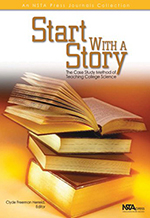
Start with a Story: The Case Study Method of Teaching College Science
Edited by Clyde Freeman Herreid
Originally published in 2006 by NSTA Press; reprinted by the National Center for Case Study Teaching in Science (NCCSTS) in 2013. Collection of 40+ essays examining every aspect of the case study method and its use in the science classroom. The book is available for purchase through NSTA .
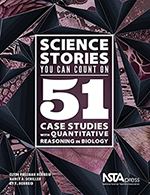
Science Stories You Can Count On: 51 Case Studies with Quantitative Reasoning in Biology
Edited by Clyde Freeman Herreid, Nancy A. Schiller, and Ky F. Herreid, NSTA Press, 2014.
Includes case studies as well as tips and techniques for promoting quantitative reasoning in biology. The book is available for purchase through NSTA or from Amazon .
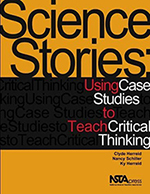
Science Stories: Using Case Studies to Teach Critical Thinking
Edited by Clyde Freeman Herreid, Nancy A. Schiller, and Ky F. Herreid, NSTA Press, 2012.
A compilation of case studies with questions and teaching notes that can be used to help develop STEM students’ critical thinking skills. The book is available for purchase through NSTA or from Amazon .
Use of Case Studies and Group Discussion in Science Education
This hands-on video shows the classical method of running a case study class used by Harvard law and business school professors for almost 100 years—the art of using successful group discussion. In 26 minutes you will learn how to ensure that your large group discussion is not a free-for-all or an exercise in futility as you try to get students to say something intelligent. Preparation and control are the key ingredients. For preparation students must read a case study ahead of time. But it is more than that. In this video, which focuses on a case study involving genetically modified food, you will see how an actual class is given a “warm-up” by breaking into small groups to discuss the reading they’ve done ahead of time. Then you will see how a large group discussion is successfully controlled. It’s the important, yet subtle, use of appropriate questions, body language, blackboard planning, and summarization that makes it all work.
Video on YouTube | Access the video booklet (PDF)
Team Learning: Cooperative Learning in the Science Classroom
Having students work in small groups is arguably the best way to teach science and this includes teaching science using cases. But how can we run a classroom this way? Here is one answer using a method called Team Learning. This 26-minute video shows you how to establish groups, how to set up a grading system that encourages group participation, how to answer students’ questions and, most importantly, why this is a superior method of teaching.
The articles listed below are selected by Clyde F. Herreid and other members of the NCCSTS.

Everyday Evidence-Based Practice in Academic Libraries: Case Studies and Reflections
November 30, 2023 Erin Nevius Publications 0

ACRL announces the publication of Everyday Evidence-Based Practice in Academic Libraries: Case Studies and Reflections , edited by Claire Walker Wiley, Amanda B. Click, and Meggan Houlihan. This new book collects excellent, thorough examples of evidence-based practice across functional areas of academic libraries and includes many evidence types in a variety of contexts.
Learn more about Everyday Evidence-Based Practice in Academic Libraries in this excerpt from the Introduction, © the editors.
The most important part of the title of this book, Everyday Evidence-Based Practice in the Academic Library: Case Studies and Reflections , is the word “everyday.” We believe that these chapters contain excellent, thorough examples of evidence-based practice (EBP) in numerous functional areas of academic libraries. It is possible that you may read one of these chapters and feel discouraged, or that you don’t have the skills, resources, or time to engage with evidence-based practice in an effective way. This is absolutely not our intent. The goal of this book is to emphasize the importance of everyday EBP while highlighting well-designed projects to inspire the work of others. An EBP project might look like a yearlong study with many types of evidence collected, or it might look like a simple assessment that helps you make a small adjustment to your work. EBP is a way of operating day-to-day. It’s not just something to turn off or on—it is embedded in the way that we approach our work.
Let’s say that you’re interested in making improvements to your information literacy program assessment process. You could conduct a review of the literature, analyze instruction statistics, run focus groups with students, survey faculty, and schedule one-on-one conversations with every teaching librarian. But it’s crucial that your EBP process fits your reality. Perhaps you don’t have the time to collect all of this evidence. You may face institutional hurdles when collecting student data. Maybe your faculty suffer from survey fatigue. Once you’ve considered your context, adapt an EBP cycle to your needs. We like the evidence-based library and information practice (EBLIP) cycle developed by Brettle and Koufogiannakis (2016), and you will see it referenced many times in these pages. Perhaps you could spend some time with instruction statistics this semester and/or recruit a colleague to help you scan the literature. Next semester (or next year!), have coffee with some targeted faculty to get their perspectives and collect feedback from your colleagues using the process that works best in your library culture. EBP doesn’t have to be exhaustive (or exhausting), and it doesn’t have to move lightning fast. It does, however, need to be flexible and appropriate for your context.
EBP Foundations
Denise Koufogiannakis and Alison Brettle’s 2016 book, Being Evidence Based in Library and Information Practice , provides the foundation for our work. Their book introduced a new framework for EBLIP including a “holistic and cyclical approach to considering evidence” (2016, p. 4). Koufogiannakis and Brettle also encourage librarians to take the principles of EBLIP and “emphasize an overall approach to practice that is about being evidence based ” (2016, p. 3). Everyday Evidence-Based Practice in the Academic Library: Case Studies and Reflections aims to provide real-world examples of librarians who embody this call. LaFitte (formerly Koufogiannakis) and Brettle also graciously contributed to this edited volume, writing the first chapter titled “The Evolving Model of EBLIP in Research and Practice” that explains the history of EBP in libraries, describes the ways that the scholarship and practice in this area have evolved and grown over the years, and makes predictions for the future.
The cyclical approach to the EBLIP process proposed by Koufogiannakis and Brettle includes five steps: articulate , assemble , assess , agree , and adapt (2016, p. 4). The authors emphasize that this process is designed to foster a “continual cycle of improvement” (2016, p. 7). In the following chapter, they provide additional insight into the cycle. In addition, the EBLIP framework encourages librarians to consider three categories of evidence to be used in combination (pp. 29–43):
- Research Evidence: Literature reporting on the previous research that is related to the question at hand.
- Local Evidence: Forms of data specific to your institution or context, either that you already have or that you specifically gather in order to answer your question.
- Professional Knowledge: What we learned in school and on the job and from mentors, peers, and professional development opportunities.
Each category encompasses many types of evidence in order to allow for the process to be “as broad and complete as possible, depending on the problem faced or question posed” (p. 28). Table 1 includes examples of different types of evidence that are described in chapters from this book. These examples provide a preview of the “everyday” focus of this book. You won’t find any randomized control trials or meta-analyses here! We acknowledge that these are valuable types of evidence for many research questions, but they are less commonly used to answer questions in library and information science practice.
Table 1. Examples from Chapters of Everyday Evidence by Evidence Type
Building the Evidence Base
Thorpe’s (2021) proposed sixth step in the EBLIP cycle is announce/advocate, which involves communicating the EBP work that we do. She proposed four benefits that could result from more announcing, advocating, and communicating as part of the EBP cycle: “to advocate and influence, to contribute to the profession’s evidence base, to demonstrate professional expertise, and to build organizational capacity and maturity” (Thorpe, 2021, p. 121). This book is our announcement , our attempt at contributing high-quality evidence from a variety of perspectives to the library and information science evidence base.
It is our hope that this book inspires a commitment to evidence-based practice in your day-to-day work and perhaps even in your library culture. We look forward to seeing many announcements of your work as the evidence base grows.
Koufogiannakis, D., & Brettle, A. (Eds.). (2016). Being evidence based in library and information practice . Facet Publishing.
Thorpe, C. (2021). Announcing and advocating: The missing step in the EBLIP model. Evidence Based Library and Information Practic e, 16 (4), 118–125. http://doi.10.18438/eblip30044 .
Copyright © 2024 | WordPress Theme by MH Themes

An official website of the United States government
Here’s how you know
Official websites use .gov A .gov website belongs to an official government organization in the United States.
Secure .gov websites use HTTPS A lock ( Lock A locked padlock ) or https:// means you’ve safely connected to the .gov website. Share sensitive information only on official, secure websites.
https://www.nist.gov/publications/building-information-commons-national-institute-standards-and-technology-library-case
Building an Information Commons at the National Institute of Standards and Technology Library: A Case Study
Additional citation formats.
- Google Scholar
If you have any questions about this publication or are having problems accessing it, please contact [email protected] .
- Random Project
- Collaborate

Qatar National Library
Introduction.
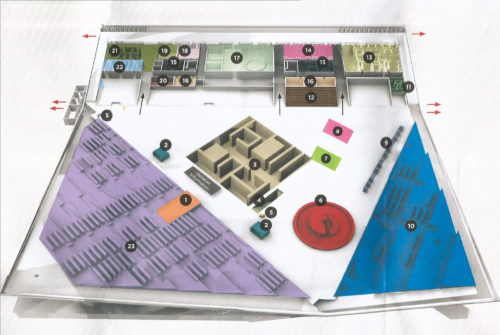
- Library – 25,900m²
- Office – 3,000m²
- Exhibition – 1,500m²
- Restaurant/Bar – 600m²
- Total – 31,000m²
The Heritage Library
- Climate-controlled display cases in the Heritage Library and throughout the building to showcase the collection.
- The dedicated Conservation and Preservation Laboratory that actively works to restore and protect items in the Heritage Library.
- The Digitization Laboratory, which digitizes items from the Library and other collections and makes them available to scholars worldwide.
The 21 st century Library
- Automated self-checkout and return stations, and a radio frequency identification (RFID) book sorter system, allow for convenient access to the Library’s materials.
- A people mover system transports library users around the perimeter of the building and throughout the shelving tiers, making the collection easily accessible for all visitors.
- A wide range of computer systems, tablets, interactive screens and audiovisual equipment throughout the building.
The Community Space
- Assistive technology room including 16 computer stations with adjustable leveling, equipped with cutting-edge hardware and software technologies
- A dedicated area for young adults.
- A 686-square-meter Children’s Library.
- 4-room Innovation Station.
- 2 instruction rooms.
- A computer lab.
- 8 group study rooms.
- 28 individual study carrels.
- 3 media viewing rooms.
- 26 large interactive screens and 465 computers.
- A 200-seat Special Events Area with lights, an LED screen, speakers and noise-dampening curtains.
- A 120-seat auditorium.
- A restaurant and a café.
Corrugated glass
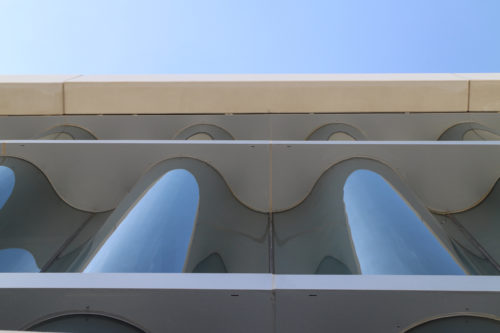
by WikiArquitectura (December 2018)

Did you find this article useful?
Really sorry to hear that...
Help us improve. How can we make this article better?
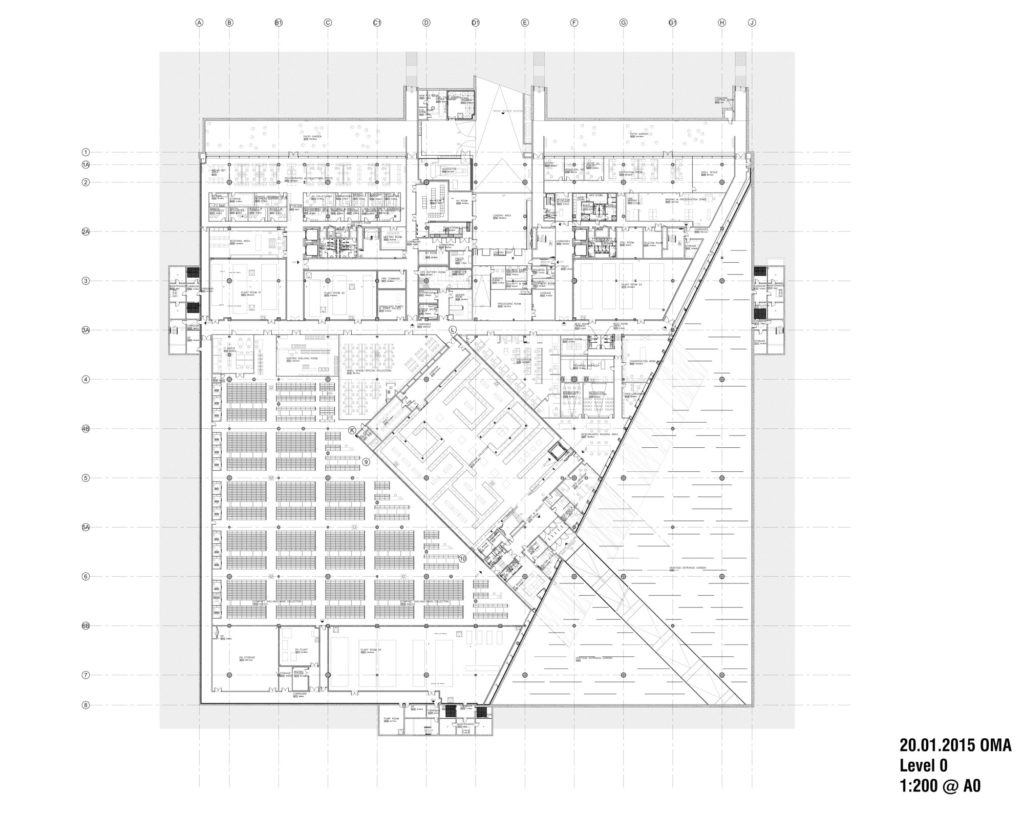
Academia.edu no longer supports Internet Explorer.
To browse Academia.edu and the wider internet faster and more securely, please take a few seconds to upgrade your browser .
Enter the email address you signed up with and we'll email you a reset link.
- We're Hiring!
- Help Center

Case: National Library Board Singapore: Delivering Cost-Effective Service Excellence Through Innovation and People

2022, Services Marketing: People, Technology, Strategy, 9th edition
The National Library Board (NLB) Singapore is a statutory board that managed to become a serial innovator. Its globally leading innovations in the library context include shelf-reading robots, and even entirely self-service libraries. NLB's consistent focus on excellent service delivery reinforced its commitment to innovation. Key levers were effective strategic leadership, a smart innovation strategy that made heavy use of technology-such as app-delivered self-service technologies, crowdsourcing, and robotics-as well as a people-centric staff culture. NLB managed to co-create attractive libraries of the future together with different types of community members, such as volunteers and corporations, ushering in a new age of citizen involvement while also preparing both the library and the population of Singapore for the knowledge demands of the 21 st century. This case study describes NLB's drivers of successful innovation.
Related Papers
Professor Jochen Wirtz
The National Library Board (NLB) Singapore is a statutory board that managed to become a serial innovator. Its globally leading innovations in the library context include an award-winning radio frequency identification (RFID) system to automate check-out, returns, and sorting of books, shelf-reading robots, and even self-service libraries. NLB's consistent focus on excellent service delivery reinforced its commitment to innovation. Key levers were effective strategic leadership, a smart innovation strategy that made heavy use of technology—such as app-delivered self-service technologies and crowdsourcing—as well as a people-centric staff culture. NLB managed to co-create attractive libraries of the future together with different types of community members, such as volunteers and corporations, ushering in a new age of citizen involvement, while also preparing both the library and the population of Singapore for the knowledge demands of the 21st century. This case study examines NLB's drivers of successful innovation.
Technovation
E. Sefertzi
Aims to explore the topic of leadership as perceived and practiced by public library leaders. Leadership happens at all levels. The leaders must manage strategically to enhance the awareness how beauty the environment of the library is in the public where they can fully maximize the library facilities to the fullest A project that has been organized lead to innovation may create new positive thoughts of Malaysian people.
Library Management
Hanne Nicolajsen
Patricia Sobczak
Innovation is often thought of as doing something completely new. In fact, innovation may also be viewed as an iterative process that builds on existing knowledge and, through trial and error and incremental successes, makes something better. This iterative process is the focus of this paper that expand on our presentation given at the 2016 Conference for Entrepreneurial Librarians. Using the Helsinki Bus Station Theory and other perspectives as the framework for exploring how innovation and entrepreneurship can be applied to libraries, the authors identified activities that initiate and encourage innovation in library settings. Conference attendees learned techniques for implementing interactive innovation.
Qualitative and Quantitative Methods in Libraries
Naresh Agarwal
Victoria L Rubin , Ahmad M . Kamal
Robin Dresel
What role can a library system play in the development of a knowledge society and a smart city or a smart nation? In Singapore, we are able to identify governmental master plans to develop and to consolidate a knowledge society and a knowledge-based economy since around 1980. The current Smart Nation plan aims for comprehensive digital innovations in the country. Singapore’s National Library Board (NLB) is an agency of the Ministry of Communication and Information; it is responsible for the Public Libraries, the National Library, and the National Archives. Its duties are regulated by law. This article describes the tasks of NLB and its institutions, the physical as well as digital resources, NLB’s services (for instance, OneSearch and the Singapore Memory Project), important programs (e.g. activities to foster digital literacy and information literacy), NLB’s social media activities, and, finally, user participation (following design thinking) in the development of NLB’s services. I...
Noor AbuTayeh
Marlies Bitter-Rijpkema , Rob Bruijnzeels
RELATED PAPERS
SSRN Electronic Journal
abdulmalik musa
Jenny Setiawan
Oral Oncology
Aldo Vargas
Lontar Komputer : Jurnal Ilmiah Teknologi Informasi
Kevin Wijaya
E3S Web of Conferences
pascal Breil
Indranil Ghosh
Zenodo (CERN European Organization for Nuclear Research)
Yvetta Kajanova
Renewable Energy
Harry Kambezidis
IEEE Communications Magazine
Davide Dardari
Africa Development
Jimi O Adesina
Acta horticulturae
Francis Mathooko
英国毕业证英国学历认证文凭 Q薇87527357办阿伯丁大学毕业证成绩单、英国Aberdeen学位证,Aberdeen毕业证留信网录取通知书offer代购university Of Aberdeen
Clinical and Experimental Immunology
Stefano Vella
Applied and Environmental Microbiology
Brendan Niemira
Geomorphology
Isaac Boateng
Nasrin Warsame
Metamorfoses - Revista de Estudos Literários Luso-Afro-Brasileiros
Luciana Salles
European Heart Journal
Harald Kaemmerer
RELATED TOPICS
- We're Hiring!
- Help Center
- Find new research papers in:
- Health Sciences
- Earth Sciences
- Cognitive Science
- Mathematics
- Computer Science
- Academia ©2024
An official website of the United States government
Here’s how you know
Official websites use .gov A .gov website belongs to an official government organization in the United States.
Secure .gov websites use HTTPS A lock ( Lock A locked padlock ) or https:// means you’ve safely connected to the .gov website. Share sensitive information only on official, secure websites.

Accelerating Biomedical Discovery and Data-Powered Health
Citations for biomedical literature
MedlinePlus
Reliable, up-to-date health information for you
An experimental multimedia search engine
Medical Subject Headings
ClinicalTrials.gov
A database of clinical studies, worldwide
Basic Local Alignment Search Tool
News and Highlights
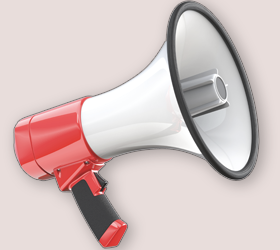

NLM Announcements

Musings from the Mezzanine

NCBI Insights

Circulating Now
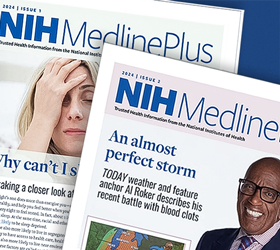
NIH MedlinePlus Magazine

Technical Bulletin

NIH Virtual Tour: National Library of Medicine
NLM is the world's largest biomedical library and a national resource for health professionals, scientists, and the public.
News Spotlight
Towards a smart bionic eye.
AI-Powered Artificial Vision for the Treatment of Incurable Blindness
These NLM-funded researchers bring together artificial intelligence, virtual reality, and visual prostheses – retinal and brain implants referred to as “bionic eyes” – in hopes of one day providing better assistive technology for incurable blindness that affects about 40 million people worldwide.
Despite recent advances in gene and stem cell therapies, which are showing great promise, there are no effective treatments for many people blinded by severe degeneration or damage to the retina, the optic nerve, or cortex. In such cases, an electronic visual prosthesis (“bionic eye”) may be the only option. The goal is thus to address fundamental questions at the intersection of neuroscience, computer science, and human-computer interaction that will enable the development of a Smart Bionic Eye.
Find more information in the NIH RePORTER or PubMed Central .
Research at NLM
Nlm intramural research program.
Intramural research at NLM consists of the development and application of computational approaches to a broad range of problems in biomedicine, molecular biology, and health. READ RESEARCH HIGHLIGHTS | MEET OUR PRINCIPAL INVESTIGATORS | EXPLORE TRAINING OPPORTUNITIES

Historical Collections at NLM
Biomedical and clinical informatics at nlm, health it and health data standards.

Efficient health care information exchange in the US and worldwide is made possible by NLM’s work with IT Data Standards.
Learn about NLM’s contributions to Health IT
Unified Medical Language System (UMLS) Terminology Services
This set of tooling services brings together many health and biomedical vocabularies and standards to enable interoperability between computer systems.
Explore UMLS
Biomedical Informatics Training Program
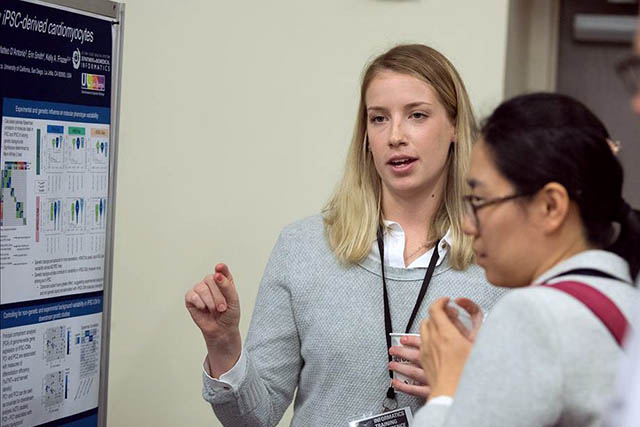
This training program provides biomedical and clinical informatics training and research opportunities for individuals at various stages in their career.
Investigate training opportunities

The Library started as a shelf of books in the Surgeon General’s office in 1836 but has grown to a collection of millions of print and electronic resources.
Explore our past
Organization
The diverse centers, divisions, advisory bodies and other organizational units that make up NLM contribute in myriad ways to the Library’s mission.
Explore the Library
Strategic Plan
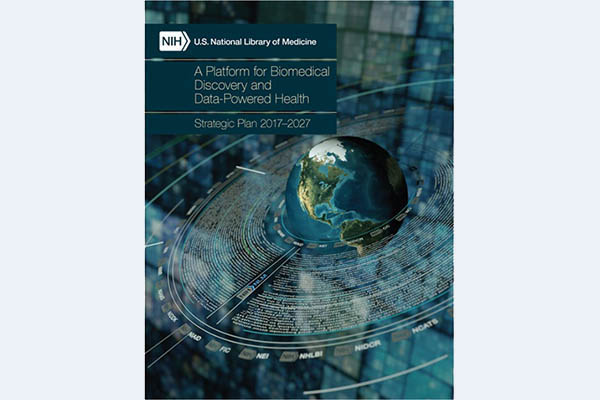
This ten year plan outlines NLM's role in a future where data and information transform and accelerate biomedical discovery and improve health and health care.
VIEW OUR STRATEGIC PLAN
(Video) CAFe Presents: Equity in Public Access to Research Results; Case Study from National Agriculture Library
Logan Delavan-Hoover - April 24, 2024
Investigations into open access to research
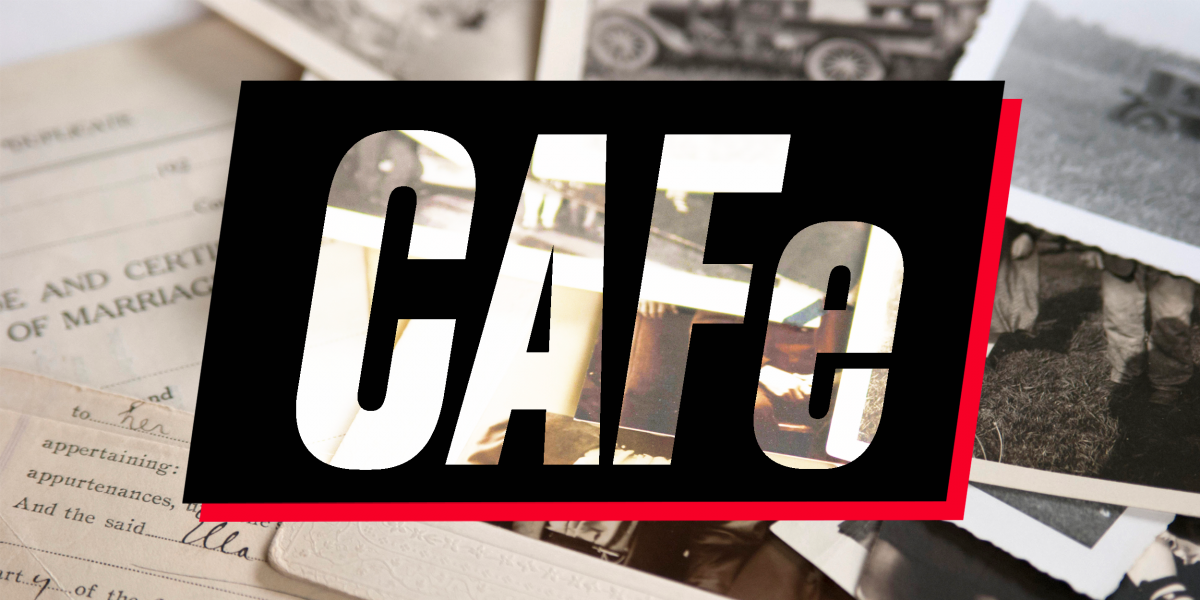
On April 20, UMD postdoctoral researcher Jwan Khisro presented her research on how federally funded research results can be made accessible to the public in an equitable manner. Khisro spoke on the differences between open science, public access, and open access, as well as on her interviews with scientists and stakeholders at the National Agriculture Library and the USDA. She raised questions about how best to define and ensure equity in access to the results of research.
“Not too long ago, I stumbled upon a great study article that was talking about discussing the equity perspective within open science,” Khisro said. “So when I read the abstract, I felt like this is a shining star. Naturally, I got excited to read it, right? So what I did was I clicked on download. So what happened? Can you guess what happened? It appeared that I have to pay $45 to download this paper.”
Watch the full video here .
- Center for Archival Futures (CAFe)
- Faculty & Staff Resources
- Privacy Policy
- Web Accessibility
- University of Maryland ·
- College of Information Studies ·
- 4130 Campus Drive ·
- Hornbake Library, Rm. 0201 ·
- College Park, MD 20742-4345 ·
- (301)405-2033 ·
- Hours: Mon-Fri, 9am-4pm
- Hispanoamérica
- Work at ArchDaily
- Terms of Use
- Privacy Policy
- Cookie Policy

Knihovna Petřiny Library / monom

Toronto Public Library – Albert Campbell Branch / LGA Architec...

Media Library Ris Orangis / DE-SO

The Horizon Library / Protoscapes

Open Library / ARP studio

J. G. Jabbra Library and R. Nassar Central Administration Buil...

White Sheet Reading Pavilion / Ninja Stuudio

Bookstore in the Blast Furnace / hyperSity architects

Mariam’s Library / Parallel Studio

Württemberg State Library Annex / LRO GmbH & Co. KG Freie Arch...

Rural Community Funded Library / In-Place Studio

BBU Library And Student Center / Gereben Marián Architects

The Library in Ice-Chrysanthemum Field / ATELIER XI

SQUARES in Tianshui Library and Daycare / SAKO Architects

Pyramid Book House / MAT Office

Twisted Brick Shell Concept Library / HCCH Studio

Shanghai Book City / Wutopia Lab

Lea Bridge Library Pavilion / Studio Weave

Masoro Learning & Sports Center / General Architecture Collabo...

Shanghai Conservatory of Music Experimental School Hebi Branch...

Cai Yuanpei Square and Jiemin Library / UAD - ACRC

Qinfeng Library / Wall Architects of XAUAT

A Red House Library / Estudio Arzubialde

Library and School Gate of CAUC / TJAD Original Design Studio
A .gov website belongs to an official government organization in the United States.
A lock ( ) or https:// means you've safely connected to the .gov website. Share sensitive information only on official, secure websites.
- About Adverse Childhood Experiences
- Risk and Protective Factors
- Program: Essentials for Childhood: Preventing Adverse Childhood Experiences through Data to Action
- Adverse childhood experiences can have long-term impacts on health, opportunity and well-being.
- Adverse childhood experiences are common and some groups experience them more than others.

What are adverse childhood experiences?
Adverse childhood experiences, or ACEs, are potentially traumatic events that occur in childhood (0-17 years). Examples include: 1
- Experiencing violence, abuse, or neglect.
- Witnessing violence in the home or community.
- Having a family member attempt or die by suicide.
Also included are aspects of the child’s environment that can undermine their sense of safety, stability, and bonding. Examples can include growing up in a household with: 1
- Substance use problems.
- Mental health problems.
- Instability due to parental separation.
- Instability due to household members being in jail or prison.
The examples above are not a complete list of adverse experiences. Many other traumatic experiences could impact health and well-being. This can include not having enough food to eat, experiencing homelessness or unstable housing, or experiencing discrimination. 2 3 4 5 6
Quick facts and stats
ACEs are common. About 64% of adults in the United States reported they had experienced at least one type of ACE before age 18. Nearly one in six (17.3%) adults reported they had experienced four or more types of ACEs. 7
Preventing ACEs could potentially reduce many health conditions. Estimates show up to 1.9 million heart disease cases and 21 million depression cases potentially could have been avoided by preventing ACEs. 1
Some people are at greater risk of experiencing one or more ACEs than others. While all children are at risk of ACEs, numerous studies show inequities in such experiences. These inequalities are linked to the historical, social, and economic environments in which some families live. 5 6 ACEs were highest among females, non-Hispanic American Indian or Alaska Native adults, and adults who are unemployed or unable to work. 7
ACEs are costly. ACEs-related health consequences cost an estimated economic burden of $748 billion annually in Bermuda, Canada, and the United States. 8
ACEs can have lasting effects on health and well-being in childhood and life opportunities well into adulthood. 9 Life opportunities include things like education and job potential. These experiences can increase the risks of injury, sexually transmitted infections, and involvement in sex trafficking. They can also increase risks for maternal and child health problems including teen pregnancy, pregnancy complications, and fetal death. Also included are a range of chronic diseases and leading causes of death, such as cancer, diabetes, heart disease, and suicide. 1 10 11 12 13 14 15 16 17
ACEs and associated social determinants of health, such as living in under-resourced or racially segregated neighborhoods, can cause toxic stress. Toxic stress, or extended or prolonged stress, from ACEs can negatively affect children’s brain development, immune systems, and stress-response systems. These changes can affect children’s attention, decision-making, and learning. 18
Children growing up with toxic stress may have difficulty forming healthy and stable relationships. They may also have unstable work histories as adults and struggle with finances, jobs, and depression throughout life. 18 These effects can also be passed on to their own children. 19 20 21 Some children may face further exposure to toxic stress from historical and ongoing traumas. These historical and ongoing traumas refer to experiences of racial discrimination or the impacts of poverty resulting from limited educational and economic opportunities. 1 6
Adverse childhood experiences can be prevented. Certain factors may increase or decrease the risk of experiencing adverse childhood experiences.
Preventing adverse childhood experiences requires understanding and addressing the factors that put people at risk for or protect them from violence.
Creating safe, stable, nurturing relationships and environments for all children can prevent ACEs and help all children reach their full potential. We all have a role to play.
- Merrick MT, Ford DC, Ports KA, et al. Vital Signs: Estimated Proportion of Adult Health Problems Attributable to Adverse Childhood Experiences and Implications for Prevention — 25 States, 2015–2017. MMWR Morb Mortal Wkly Rep 2019;68:999-1005. DOI: http://dx.doi.org/10.15585/mmwr.mm6844e1 .
- Cain KS, Meyer SC, Cummer E, Patel KK, Casacchia NJ, Montez K, Palakshappa D, Brown CL. Association of Food Insecurity with Mental Health Outcomes in Parents and Children. Science Direct. 2022; 22:7; 1105-1114. DOI: https://doi.org/10.1016/j.acap.2022.04.010 .
- Smith-Grant J, Kilmer G, Brener N, Robin L, Underwood M. Risk Behaviors and Experiences Among Youth Experiencing Homelessness—Youth Risk Behavior Survey, 23 U.S. States and 11 Local School Districts. Journal of Community Health. 2022; 47: 324-333.
- Experiencing discrimination: Early Childhood Adversity, Toxic Stress, and the Impacts of Racism on the Foundations of Health | Annual Review of Public Health https://doi.org/10.1146/annurev-publhealth-090419-101940 .
- Sedlak A, Mettenburg J, Basena M, et al. Fourth national incidence study of child abuse and neglect (NIS-4): Report to Congress. Executive Summary. Washington, DC: U.S. Department of Health an Human Services, Administration for Children and Families.; 2010.
- Font S, Maguire-Jack K. Pathways from childhood abuse and other adversities to adult health risks: The role of adult socioeconomic conditions. Child Abuse Negl. 2016;51:390-399.
- Swedo EA, Aslam MV, Dahlberg LL, et al. Prevalence of Adverse Childhood Experiences Among U.S. Adults — Behavioral Risk Factor Surveillance System, 2011–2020. MMWR Morb Mortal Wkly Rep 2023;72:707–715. DOI: http://dx.doi.org/10.15585/mmwr.mm7226a2 .
- Bellis, MA, et al. Life Course Health Consequences and Associated Annual Costs of Adverse Childhood Experiences Across Europe and North America: A Systematic Review and Meta-Analysis. Lancet Public Health 2019.
- Adverse Childhood Experiences During the COVID-19 Pandemic and Associations with Poor Mental Health and Suicidal Behaviors Among High School Students — Adolescent Behaviors and Experiences Survey, United States, January–June 2021 | MMWR
- Hillis SD, Anda RF, Dube SR, Felitti VJ, Marchbanks PA, Marks JS. The association between adverse childhood experiences and adolescent pregnancy, long-term psychosocial consequences, and fetal death. Pediatrics. 2004 Feb;113(2):320-7.
- Miller ES, Fleming O, Ekpe EE, Grobman WA, Heard-Garris N. Association Between Adverse Childhood Experiences and Adverse Pregnancy Outcomes. Obstetrics & Gynecology . 2021;138(5):770-776. https://doi.org/10.1097/AOG.0000000000004570 .
- Sulaiman S, Premji SS, Tavangar F, et al. Total Adverse Childhood Experiences and Preterm Birth: A Systematic Review. Matern Child Health J . 2021;25(10):1581-1594. https://doi.org/10.1007/s10995-021-03176-6 .
- Ciciolla L, Shreffler KM, Tiemeyer S. Maternal Childhood Adversity as a Risk for Perinatal Complications and NICU Hospitalization. Journal of Pediatric Psychology . 2021;46(7):801-813. https://doi.org/10.1093/jpepsy/jsab027 .
- Mersky JP, Lee CP. Adverse childhood experiences and poor birth outcomes in a diverse, low-income sample. BMC pregnancy and childbirth. 2019;19(1). https://doi.org/10.1186/s12884-019-2560-8 .
- Reid JA, Baglivio MT, Piquero AR, Greenwald MA, Epps N. No youth left behind to human trafficking: Exploring profiles of risk. American journal of orthopsychiatry. 2019;89(6):704.
- Diamond-Welch B, Kosloski AE. Adverse childhood experiences and propensity to participate in the commercialized sex market. Child Abuse & Neglect. 2020 Jun 1;104:104468.
- Shonkoff, J. P., Garner, A. S., Committee on Psychosocial Aspects of Child and Family Health, Committee on Early Childhood, Adoption, and Dependent Care, & Section on Developmental and Behavioral Pediatrics (2012). The lifelong effects of early childhood adversity and toxic stress. Pediatrics, 129(1), e232–e246. https://doi.org/10.1542/peds.2011-2663
- Narayan AJ, Kalstabakken AW, Labella MH, Nerenberg LS, Monn AR, Masten AS. Intergenerational continuity of adverse childhood experiences in homeless families: unpacking exposure to maltreatment versus family dysfunction. Am J Orthopsych. 2017;87(1):3. https://doi.org/10.1037/ort0000133 .
- Schofield TJ, Donnellan MB, Merrick MT, Ports KA, Klevens J, Leeb R. Intergenerational continuity in adverse childhood experiences and rural community environments. Am J Public Health. 2018;108(9):1148-1152. https://doi.org/10.2105/AJPH.2018.304598 .
- Schofield TJ, Lee RD, Merrick MT. Safe, stable, nurturing relationships as a moderator of intergenerational continuity of child maltreatment: a meta-analysis. J Adolesc Health. 2013;53(4 Suppl):S32-38. https://doi.org/10.1016/j.jadohealth.2013.05.004 .
Adverse Childhood Experiences (ACEs)
ACEs can have a tremendous impact on lifelong health and opportunity. CDC works to understand ACEs and prevent them.

IMAGES
VIDEO
COMMENTS
The NCCSTS Case Collection, created and curated by the National Center for Case Study Teaching in Science, on behalf of the University at Buffalo, contains over a thousand peer-reviewed case studies on a variety of topics in all areas of science. Cases (only) are freely accessible; subscription is required for access to teaching notes and ...
The National Library is building its National Collection, the Public Library opened its collection for lending books, audio visual like DVDs, Music CDs and Kits with free memberships. ... H., & Dudek, K. (2016). From the concept to results: A case study on the collection development for the ODC-Opening Day Collection at Qatar National Library ...
Case Study: National Library Board Singapore: Delivering Cost-Effective Service Excellence Through Innovation and People January 2022 DOI: 10.1142/9781944659806_0027
The Qatar National Library, designed by OMA's co-founder Rem Koolhaas, is a unique cultural building, with its striking shape, unusual library interior planning, and bringing together the past and the future through materials. References: QNL,(2018). The Building. Doha, QA: Qatar National Library. QNL. About the Library/ Our Building. [online].
Case Study: National Library Board Singapore: Delivering Cost-Effective Service Excellence Through Innovation and People. Chapter · August 2021. DOI: 10.1142/9781944659806_0027 CITATIONS. 0. READS. 67. 2 authors: Some o f the authors of this public ation are also w orking on these r elated projects:
CHICAGO — One of the first books of its kind, "Public Libraries and their National Policies: International Case Studies," by John Helling, offers an in-depth look at national public library policies at a time when public libraries are facing shrinking budgets and pressure to make structural changes.Exploring service models from a dozen countries around the world, Helling focuses on areas ...
The book's detailed case studies of ten design projects from public, academic, and school libraries identify paths to success as well as hazards to avoid. ... (ALA) launched National Library Week with today's release of its highly anticipated annual list of the Top 10 Most Challenged Books of 2023 and the State of America's Libraries ...
The National Library Board (NLB) Singapore is a statutory board that managed to become a serial innovator. ... Case study: National Library Board Singapore: Delivering cost-effective service excellence through innovation and people. (2021). Services Marketing: People, Technology, Strategy. 9, 589. Available at: https://ink.library.smu.edu.sg ...
Led by the National Library Board (NLB), the Singapore Memory Project (SMP) is a long-term national programme under the National Library of Singapore (NLS) to enable the cultural and intellectual ...
Edited by Clyde Freeman Herreid. Originally published in 2006 by NSTA Press; reprinted by the National Center for Case Study Teaching in Science (NCCSTS) in 2013. Collection of 40+ essays examining every aspect of the case study method and its use in the science classroom. The book is available for purchase through NSTA.
November 30, 2023 Erin Nevius Publications 0. ACRL announces the publication of Everyday Evidence-Based Practice in Academic Libraries: Case Studies and Reflections, edited by Claire Walker Wiley, Amanda B. Click, and Meggan Houlihan. This new book collects excellent, thorough examples of evidence-based practice across functional areas of ...
The British Library's GBP 33m Newspaper Programme, which is now nearing completion, was established to address a range of legacy issues associated with ensuring the long term storage, preservation and access to the UK's national newspaper collection, one of the largest and most comprehensive newspaper collections anywhere in the world with more than 750 million pages of newspapers spanning ...
passive green buildings case study on national library of singapore manitoba hydro place. green building strategies ( arc61804 ) - assignment 1 teo cheng yong ahmed mohamed yoosuf low ying thong ...
The article discusses how the Research Library of the National Institute of Standards and Technology has transformed its physical and virtual spaces over the past year and a half into a comprehensive InfoCommons. ... R. (2005), Building an Information Commons at the National Institute of Standards and Technology Library: A Case Study, LIBRES ...
A Case Study about Qatar National Library, International Information & Library Review, DOI: 10.1080/10572317.2021.1898757 To link to this article: https://doi.or g/10.1080/10572317.2021.1898757
John Helling, Witney, UK, Chandos Publishing, 2012, , 172 pp, £47.50 (soft cover), ISBN 978-1-84334-679-1. Drawing on his knowledge and experience as a public librarian and his teaching and research of public-library management, John Helling examines the service models and practices of 12 countries from around the world to examine the barriers and benefits of the national and international ...
Once inside the library provides 31,000 square meters of usable space divided in the following categories: Library - 25,900m². Office - 3,000m². Exhibition - 1,500m². Restaurant/Bar - 600m². Total - 31,000m². From the center of the library you really feel like you can actually see it all.
Building Case Study: National Library of Singapore. Architectural Technology 3. 2020-2021 / Dr Gabriela Zapata-Lancaster. National Library of Singapore. Group no: 5 C1813712 C1917612 C1949285 ...
Apparently, there is a paradox that such a traditional form produces inventive solutions, and that is the case for the Qatar National Library. The building is 138 meters long, equivalent to the ...
The National Library Board (NLB) Singapore is a statutory board that managed to become a serial innovator. Its globally leading innovations in the library context include an award-winning radio frequency identification (RFID) system to automate check-out, returns, and sorting of books, shelf-reading robots, and even self-service libraries.
These NLM-funded researchers bring together artificial intelligence, virtual reality, and visual prostheses - retinal and brain implants referred to as "bionic eyes" - in hopes of one day providing better assistive technology for incurable blindness that affects about 40 million people worldwide. Despite recent advances in gene and stem ...
Khisro spoke on the differences between open science, public access, and open access, as well as on her interviews with scientists and stakeholders at the National Agriculture Library and the USDA. She raised questions about how best to define and ensure equity in access to the results of research.
In Library and Information Science, Altmetrics is one of the emerging metrics to capture the online attention of scholarly literature. The present paper is an attempt to do a correlation study of ...
Lea Bridge Library Pavilion / Studio Weave Masoro Learning & Sports Center / General Architecture Collabo... Shanghai Conservatory of Music Experimental School Hebi Branch...
Toxic stress, or extended or prolonged stress, from ACEs can negatively affect children's brain development, immune systems, and stress-response systems. These changes can affect children's attention, decision-making, and learning. 18. Children growing up with toxic stress may have difficulty forming healthy and stable relationships.